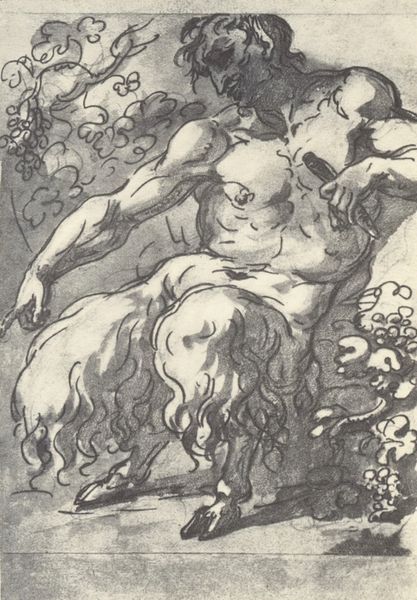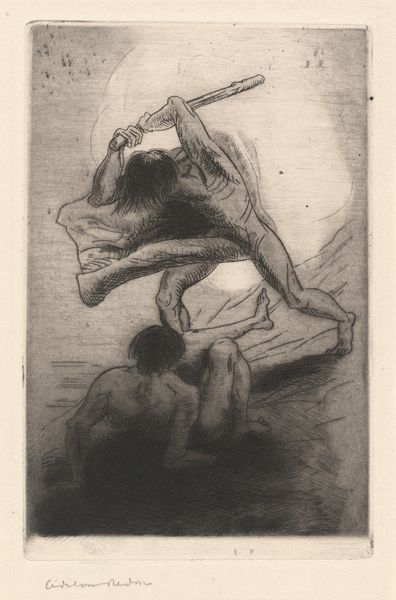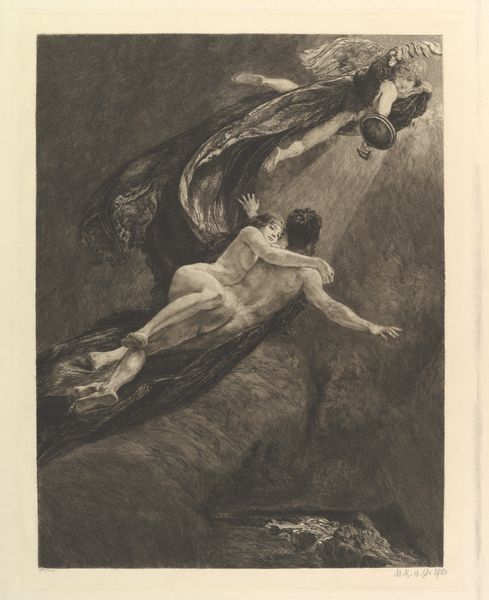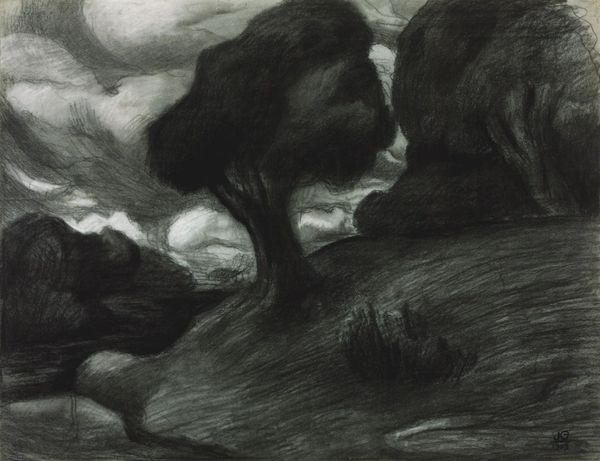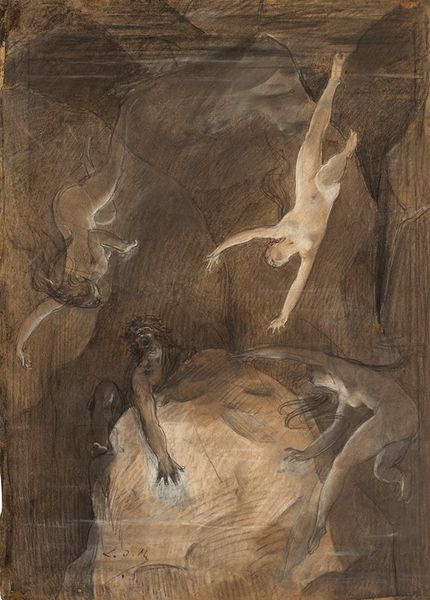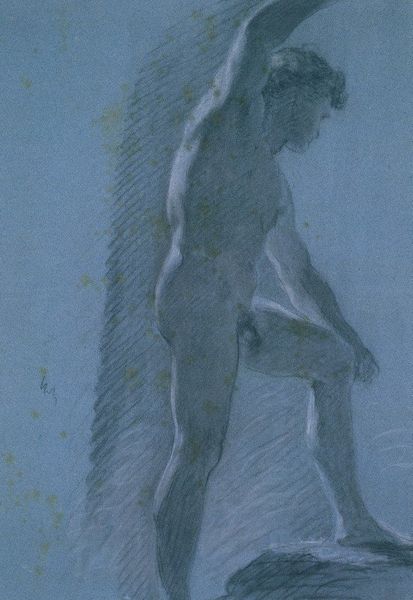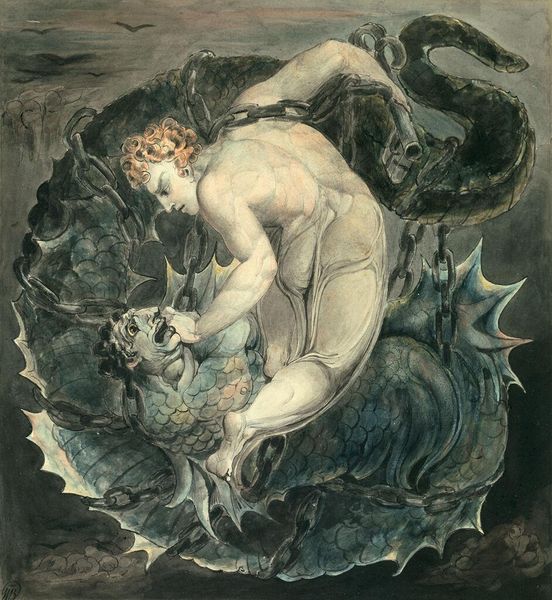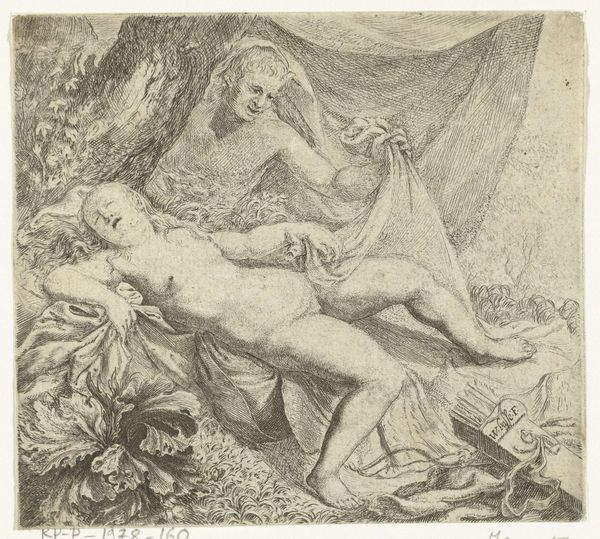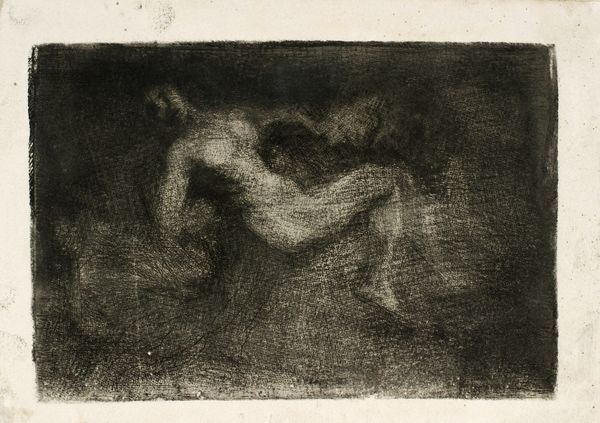
Dimensions: 16 1/4 x 12 1/2 in. (41.28 x 31.75 cm) (plate)17 3/16 x 13 1/2 in. (43.66 x 34.29 cm) (sheet)24 13/16 x 18 7/16 in. (63.02 x 46.83 cm) (mount)
Copyright: No Copyright - United States
Curator: Here we have Max Klinger’s "New Dreams of Happiness," an etching created around 1887, now residing here at the Minneapolis Institute of Art. Editor: My first impression? The swirling, almost chaotic linework creates a dreamlike, unsettling atmosphere. The figures seem suspended, caught in a moment of both intimacy and uncertainty. Curator: Absolutely. Klinger, as a German Expressionist with roots in Romanticism, frequently explored psychological landscapes. This work is rich with allegorical intent, speaking to the precarious nature of desire and the societal constraints on personal fulfillment during that era. Notice how the nude figures are literally carried aloft—their happiness dependent on a somewhat ethereal, even monstrous, winged figure. Editor: Yes, the formal tension is palpable. The contrast between the smooth, idealized bodies and the jagged, almost violently etched landscape is quite stark. There’s a push and pull that animates the whole composition. I’m also drawn to how Klinger uses light and shadow; it almost feels staged. Curator: I think that reflects Klinger's interest in staging complex narratives about gender and class. The etching medium itself becomes significant—allowing for those stark contrasts, that sense of fragility within what could be read as a critique of bourgeois domesticity. They’re heading towards happiness but where exactly? And at what cost? The rigid gender roles and social expectations were things Klinger frequently critiqued. Editor: Right, the technical mastery is undeniable, but it's the deliberate fracturing of form and space that truly captivates. This disjunction forces the viewer to question not only what they see but *how* they see. Curator: This etching becomes a commentary on how happiness itself might be a performance. And whose dream of happiness are we even pursuing? Klinger is really making us contend with our own values here. Editor: Indeed, contemplating it, the brilliance of the work resides in the dynamic interplay of the elements: form, light, and narrative combine to provoke more than pleasure but real consideration of lived life. Curator: Agreed, I believe the work still has so much resonance with today’s viewer and raises these vital conversations about self-expression and freedom.
Comments
No comments
Be the first to comment and join the conversation on the ultimate creative platform.

